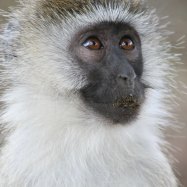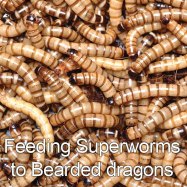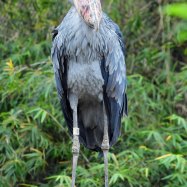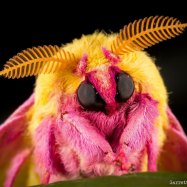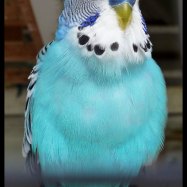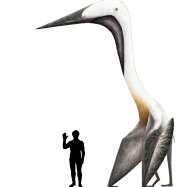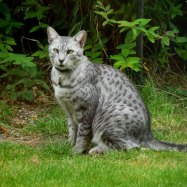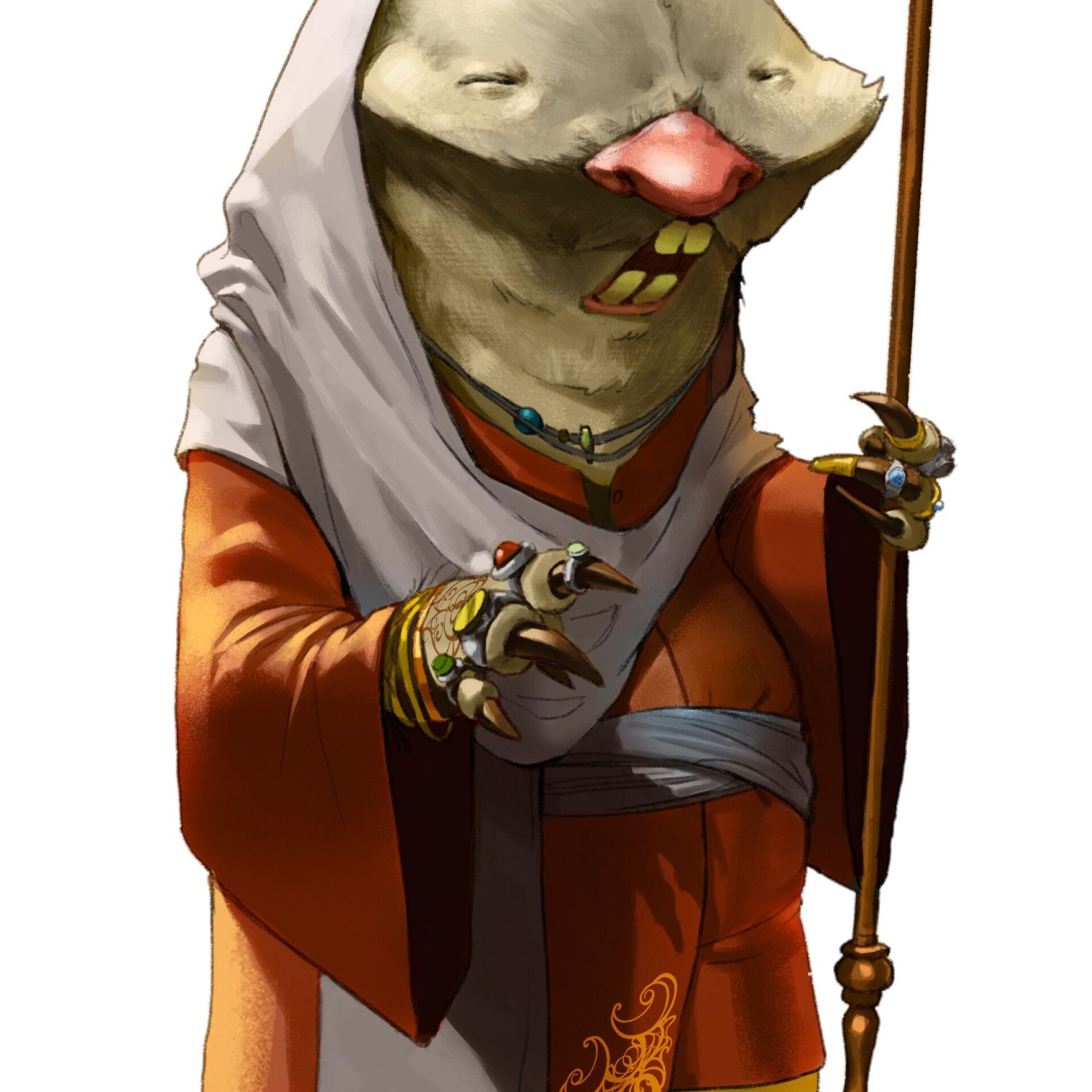
Zokor
15 to 22 cm
The Zokor is a small but fascinating animal found in northern and central China. With a length of 15 to 22 cm, it belongs to the family Spalacidae and has a stocky, cylindrical body shape. Its distinctive features make it a unique addition to China's diverse wildlife. #Zokor #China #Spalacidae
Animal Details Summary:
Common Name: Zokor
Kingdom: Animalia
Habitat: Grasslands, meadows, and forests
A Subterranean Marvel: Exploring the World of the Zokor Rodent
Deep below the expansive grasslands, meadows, and forests of Asia lies a hidden world filled with underground tunnels, chambers, and networks. This mysterious and elusive creature, known as the Zokor, has captivated the attention of researchers and animal lovers alike with its unique adaptations to its subterranean lifestyle.Meet the Zokor
Scientifically known as Myospalax and commonly referred to as the Zokor, this rodent belongs to the family Spalacidae and the order Rodentia, which includes other small mammals such as mice, rats, and hamsters. They can be found in northern and central China, making their home in the vast grasslands and meadows of Asia Zokor.The Zokor has a stocky cylindrical body with a length of 15 to 22 cm and a weight averaging between 150 to 350 grams. Its short legs and broad, powerful claws make it well-equipped for a life spent digging and burrowing underground. Their bodies are covered in a thick, gray or brown fur, making them well-camouflaged in their earthy habitat.
Subterranean Specialists
The Zokor is a master of living underground, making use of its sharp claws, powerful legs, and keen sense of smell to create an intricate network of tunnels and burrows. These burrows can extend up to 3 meters in depth and 100 meters in length, providing the Zokor with a safe haven from predators and extreme weather conditions above ground.Their burrows also serve as effective traps for unsuspecting insects, roots, and bulbs, which they feed on as herbivores. The Zokor has strong, gnawing incisors, which they use to break through roots and bulbs, making them an essential part of the ecosystem by promoting soil aeration and nutrient cycling.
An Eastern Delight
The Zokor's geographical distribution is limited to Asia. They can only be found in China, making them a treasured and beloved animal among the Chinese people Zebra Finch. In some areas, the Zokor is considered a delicacy and is even farmed for its meat.However, due to their subterranean lifestyle and elusive nature, it is not easy to spot a Zokor in the wild. They are typically active at night and rarely venture above ground, making them a true enigma of the animal kingdom.
Ancient Origins
The Zokor's scientific name, Myospalax, has an interesting meaning derived from Greek and Latin roots. "Myos" means muscle, while "palax" means a harrow, referring to their strong muscular bodies and the furrow-like burrows they create in the ground.Their evolutionary history dates back millions of years, with fossils of the Zokor's ancestors found in China dating back to the Miocene period, over 5 million years ago. These early ancestors had similar adaptations for a subterranean lifestyle, proving the Zokor's resilience and success in its unique habitat.
Challenges and Threats to the Zokor's Survival
Despite their success in adapting to a subterranean lifestyle, the Zokor faces several challenges and threats to its survival.One of the main challenges they face is habitat loss. As human populations expand and agricultural activities increase, the Zokor's natural habitat is rapidly diminishing. This loss of habitat not only disrupts the Zokor's way of life but also affects the balance of the ecosystem, as they play an important role in soil health and nutrient cycling.
The Zokor is also facing predation from domestic and feral cats, which have been introduced to their natural habitat. These cats prey on the Zokor, and their burrows often collapse under the weight of a cat's paws, trapping and killing the rodents.
Human activity, such as mining and construction, also poses a threat to the Zokor's survival. As they live primarily underground, their burrows can be damaged or destroyed, leaving them without a safe place to live.
The Importance of Conservation
With these threats and challenges facing the Zokor, conservation efforts are crucial to ensure the survival of this unique and fascinating animal. The Zokor is currently listed as a species of least concern on the International Union for Conservation of Nature (IUCN) Red List. However, their population is declining due to habitat loss and other threats mentioned above.Efforts are being made to protect and preserve the Zokor's habitat through land management practices and conservation initiatives. The Chinese government has also implemented laws to protect the Zokor and other wildlife species.
Awareness and education also play a vital role in the conservation of the Zokor. By raising awareness about this elusive creature and its importance in the ecosystem, we can foster a sense of responsibility and care for their survival.
Unlocking the Secrets of the Zokor through Research
As a relatively understudied species, there is still much to learn about the Zokor. Researchers have been studying the Zokor to understand their adaptations to a subterranean lifestyle, their behavior, and their role in the ecosystem.One study found that Zokors may have played a critical role in shaping the evolution of underground plants in their habitat. As they dig through the soil, they leave behind open tunnels that allow oxygen and water to reach deeper layers. This, in turn, allows plants to grow deeper roots, making them less vulnerable to surface disturbances.
Researchers are also studying the Zokor's social structure and communication methods, as they have been observed to live in colonies. It is believed that they may use vocalizations and scent marking to communicate with one another, but further research is needed to confirm this.
Coming Out of Hiding: Sustainable Ecotourism
With their elusive nature and importance in the ecosystem, the Zokor has the potential to become a popular attraction for ecotourism. By promoting sustainable and responsible ecotourism practices, tourists can have the opportunity to witness these creatures in their natural habitat without causing harm to their environment.In recent years, efforts have been made to create nature reserves and protected areas for the Zokor. These areas also provide opportunities for tourists to view the Zokor and other wildlife species while preserving their natural habitat.
Conclusion
In the grasslands and meadows of northern and central China, a unique and fascinating creature thrives, hidden from plain sight. The Zokor has mastered the art of living underground, making use of its powerful claws, keen sense of smell, and strong muscular body to create an intricate network of tunnels and burrows.As we continue to learn more about the Zokor and its importance in the ecosystem, conservation efforts are crucial to ensure its survival. By raising awareness, promoting sustainable ecotourism, and preserving their natural habitat, we can ensure that this subterranean marvel continues to thrive in its underground kingdom.

Zokor
Animal Details Zokor - Scientific Name: Myospalax
- Category: Animals Z
- Scientific Name: Myospalax
- Common Name: Zokor
- Kingdom: Animalia
- Phylum: Chordata
- Class: Mammalia
- Order: Rodentia
- Family: Spalacidae
- Habitat: Grasslands, meadows, and forests
- Feeding Method: Herbivorous
- Geographical Distribution: Asia
- Country of Origin: China
- Location: Northern and central China
- Animal Coloration: Gray or brown
- Body Shape: Stocky and cylindrical
- Length: 15 to 22 cm
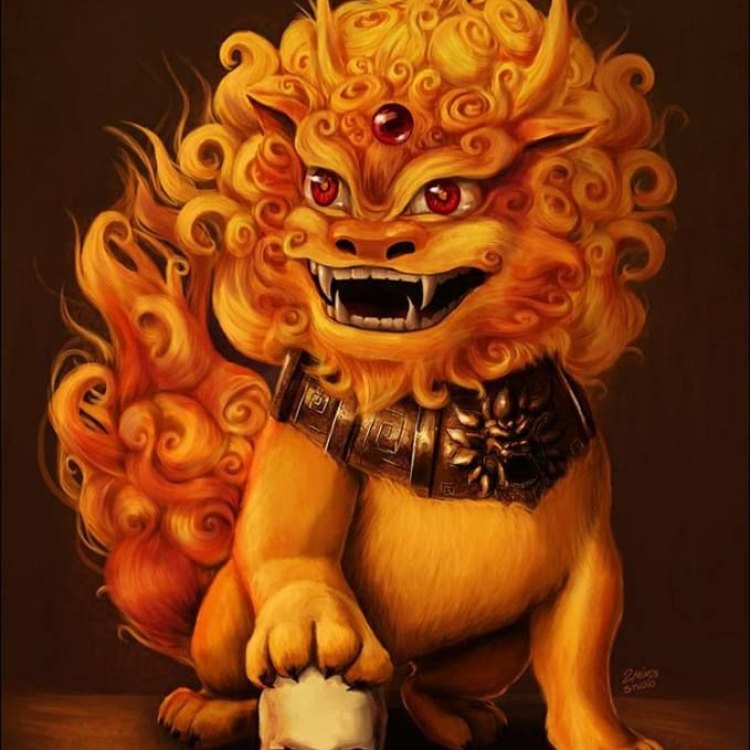
Zokor
- Adult Size: Small
- Average Lifespan: 3 to 5 years
- Reproduction: Sexual
- Reproductive Behavior: Polygynous
- Sound or Call: Grunting sounds
- Migration Pattern: Non-migratory
- Social Groups: Solitary
- Behavior: Burrowing and tunneling
- Threats: Habitat loss and agricultural activities
- Conservation Status: Data Deficient
- Impact on Ecosystem: Creates complex underground tunnel systems
- Human Use: None
- Distinctive Features: Prominent incisors and powerful forelimbs
- Interesting Facts: Zokors are excellent diggers and spend most of their lives underground.
- Predator: Owls, foxes, and weasels

Myospalax
The Fascinating World of Zokors: Mysterious Burrowing Rodents
Nestled in the underground world of the Himalayan mountains lies a unique species of rodent, the zokor. Although small in size, zokors have captured the attention of researchers and nature enthusiasts alike. These elusive creatures are known for their incredible burrowing abilities and their mysterious behavior. Despite being relatively unknown, zokors play a crucial role in their native ecosystems PeaceOfAnimals.Com. In this article, we will uncover the hidden world of zokors, exploring their interesting features, behaviors, and their impact on the environment.Meet the Zokor: Small but Mighty
Adult zokors are petite creatures, measuring around 6-8 inches in length and weighing about 4-6 ounces. They have a round, stocky body with short legs and a short, sparsely haired tail. Their fur comes in various shades of brown, gray, and black, helping them blend into their underground habitat. The most distinctive feature of zokors is their prominent incisors and powerful forelimbs, which are specially adapted for digging and tunneling.A Short and Mysterious Life
Zokors have a relatively short lifespan, with an average of 3 to 5 years in the wild. However, they have a high reproductive rate, with females producing two to three litters per year, each consisting of 2-6 pups. Zokors reach sexual maturity at around 6 months and have a polygynous mating system, where a male mates with multiple females.The Solitary Life of a Zokor
Zokors are solitary creatures, preferring to live and forage on their own Zebra Spitting Cobra. They are most active at night and spend most of their time underground, rarely venturing to the surface. Their solitary lifestyle is due to the limited resources in their habitat, leading to fierce competition for food and shelter. However, during mating season, male zokors will engage in territorial battles to attract females.The Sound of a Zokor
Although mostly silent, zokors are known to make grunting sounds, especially when interacting with other zokors. These grunts serve as a form of communication between mates and can also signal aggression or warning to other zokors in the vicinity.The Mysterious Burrowers
As burrowing animals, zokors are masters of the underground world. They have strong front limbs and sharp claws, which they use to dig through the soil and create elaborate tunnel systems. Interestingly, zokors are also known for their"tripping behavior," where they use their heads to throw dirt behind them as they dig, similar to a person using a shovel. These burrows can be up to several meters deep and can have multiple chambers for different purposes, such as sleeping, storing food, and giving birth.A Threatened Species
The habitat of zokors is mainly in the remote areas of the Himalayan mountains, specifically in China and Tibet. However, their population is declining due to habitat loss and agricultural activities. As the human population grows, zokors' natural habitats are being converted into farmlands, leaving them with limited areas to burrow and forage. Furthermore, their burrowing behavior often damages crops, leading to conflict with farmers.Data Deficient: In Need of Conservation
According to the International Union for Conservation of Nature (IUCN), zokors are classified as a Data Deficient species. This means that there is not enough information available about their population size and distribution to determine their exact conservation status. However, it is evident that their numbers are decreasing, and urgent conservation efforts are needed to protect this unique species.The Impact of Zokors on Their Ecosystem
Despite their unassuming size, zokors play a crucial role in their native ecosystems. Their burrowing and tunneling behavior creates a complex network of underground tunnels that serve as shelter for other animals, such as lizards, insects, and small mammals. This behavior also improves soil quality and aeration, allowing plants to grow better. Furthermore, the extensive tunnel systems help with water drainage and filtration, preventing soil erosion.Mysterious Creatures: A Lack of Human Use
Unlike other animals, zokors do not have any significant interactions with humans. They do not have any commercial or subsistence value, and they are not kept as pets. Due to their elusive and solitary nature, zokors have not been studied extensively, and very little is known about their behavior or biology. However, researchers believe that studying zokors can provide valuable insights into the evolution of underground mammals and their adaptations.A Zokor's Predators
As with any animal, zokors have their share of predators. Owls, foxes, and weasels are known to prey on these small rodents. Because of their underground habitat, zokors have adapted by having excellent hearing and a heightened sense of smell, enabling them to detect potential predators. Additionally, zokors have the ability to close their ears and nostrils while digging, preventing soil particles from entering their respiratory system.The Importance of Protecting Zokors
With a declining population and a lack of information about this species, it is crucial to protect zokors. As a keystone species, zokors play a crucial role in maintaining the delicate balance of their ecosystem. The loss of zokors can lead to a domino effect, affecting other animals and plants in their habitat. To preserve zokors, habitat conservation efforts must be put in place, and sustainable farming practices should be encouraged to reduce conflicts with farmers.An Exciting Future for Zokors
Despite their declining numbers, there is still hope for the future of zokors. Conservation efforts are being made to protect their natural habitats, and researchers are continuously studying them to gain a better understanding of their behavior and biology. By shedding light on these mysterious and fascinating creatures, we can raise awareness and inspire others to take action to protect zokors and their fragile ecosystem.In Conclusion
In the vast and diverse world of animals, zokors stand out as unique and mysterious creatures. With their incredible burrowing abilities and solitary lifestyle, zokors have captured our curiosity and fascination. As we continue to learn more about these elusive rodents, it is our responsibility to protect and conserve them for future generations to appreciate the wonders of nature. The enigmatic zokors have shown us that even the smallest creatures can have a significant impact on their environment, making them a vital and valuable part of our ecosystem.

A Subterranean Marvel: Exploring the World of the Zokor Rodent
Disclaimer: The content provided is for informational purposes only. We cannot guarantee the accuracy of the information on this page 100%. All information provided here may change without prior notice.




